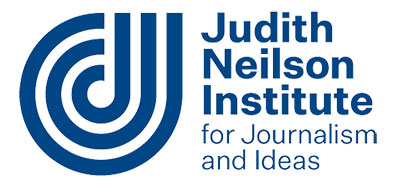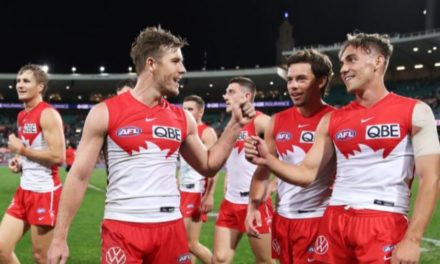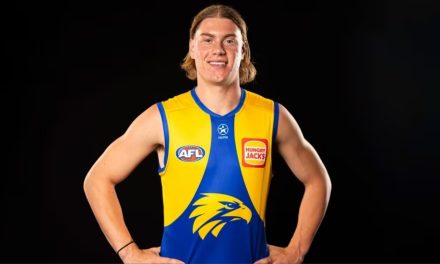Main image: Former Giant Jeremy Cameron. Inset: Brad Crouch, now a Saint, and Joe Daniher, a Lion. Pictures: AFL MEDIA.
Colonel Harland Sanders came up with 11 herbs and spices for his carefully-guarded secret recipe for fried chicken. The AFL says it will consider age, value and term of a contract offer … and its own secret herbs and spices with discretionary powers to determine compensation to a club for losing a free agent.
At least the secrecy of the Colonel’s ingredients falls to scientific studies – salt, thyme, basil, oregano, celery salt, black pepper, dry mustard, paprika, garlic salt, ground ginger and white pepper in white flour.
In AFL circles, though, a free agent’s age is public knowledge, but not his salary. His terms of contract also can be a secret at times, particularly if there are performance-based clauses in the deal.
So, in a game where every analyst – and every fan – can play Michael Christian in the role of AFL Match Review Officer in grading reportable offences, no-one can pre-empt the compensation pick for losing a free agent.
“It always seems to spark some controversy,” says former AFL football boss Adrian Anderson, the lawyer who ushered free agency into elite Australian football from 2010-2012.
This seems an understatement. And in 2020, a strange year in itself, why would the AFL fail to disappoint?
This year’s AFL free-agency period, which closed last Friday, had Greater Western Sydney stay true to its vow to match Geelong’s offer to Coleman Medal-winning key forward Jeremy Cameron.
This becomes the first time in AFL history a club has blocked a restricted free agent (with the reminder Adelaide and Geelong opted to avoid free agency to move direct to organising a trade for future Brownlow medallist Patrick Dangerfield in 2015, starting secret talks in-season, during August).
A ground-breaking tough stand by the Giants starkly contrasted the verbal by-play Adelaide tried towards St Kilda with restricted free agent Brad Crouch, the 2019 Crows club champion. As a poker game, to the theme attached to the Crouch deal, the Crows had their bluff well and truly picked off by St Kilda.
Both the Cameron and Crouch cases have sharpened the focus and stoked the debate on the mysterious free agency compensation formula, with the questions starting during the lead-up to the current AFL trade period. But no-one became wiser at the end. Colonel Sanders would have delighted in such secrecy on his herbs and spices.
Both Adelaide and Greater Western Sydney knew they would be short-changed by compensation draft picks. Ultimately, the Giants stood tall in making history with a stand against Cameron taking a fee walk to Kardinia Park.
Adelaide blinked, allowing Crouch to move to St Kilda on a long-term contract – of at least four seasons with reportedly a trigger for a fifth year. The Crows simply could not match that contract after being advised at list management meetings to extend themselves to no more than three years with the hard-nosed midfielder.
It was much more difficult for Adelaide to plan a new strategy – or to contemplate keeping the Victorian – when Crouch made it clear he wanted a new start at St Kilda. And St Kilda knew it, explaining exactly why list manager James Gallagher (a former Crows player) avoided the public stage to make any grandstanding statements.
It was not surprising that St Kilda held firm on keeping Crouch in the free agency market rather than working a trade deal featuring the Saints’ first-round draft pick at No. 17 (originally 15 before being pushed back by two free-agency compensation picks).
The compensation system clearly failed Adelaide – draft pick No.2 was too much for Crouch; No. 23 was not enough. The AFL’s discretionary powers are meaningless in this case if no appropriate middle ground emerged to compensate the Crows.
No wonder so many inside and outside the game remain bemused by the “secret herbs and spices” the AFL uses in determining compensation picks with free agency.
The AFL – and more so the AFL Players’ Association – will maintain free agency is working because the players are moving and thereby removing the legal theme of “restraint of trade” in the game.
The final compensation count from free agency in 2020 is as follows:
No. 7: Joe Daniher (Essendon to Brisbane)
No. 10: Zac Williams (GWS to Carlton)
No. 23: Brad Crouch (Adelaide to St Kilda)
No. 31: Aidan Corr (GWS to North Melbourne)
No. 40: Rory Atkins (Adelaide to Gold Coast)
No. 46: Isaac Smith (Hawthorn to Geelong)
No compensation: Shaun McKernan (Essendon to St Kilda)
Traded rather than given a free pass:
Unrestricted free agent Kyle Hartigan (Adelaide to Hawthorn) for 2021 fourth-round pick.
The rejected compensation offer to restricted free agents was:
No. 11, Jeremy Cameron (GWS to Geelong)
If Top 50 player lists were in vogue, would these rankings from No. 7 for Daniher to Nos. 10 for Williams, 11 for Cameron and 23 for Crouch hold up to the famous “pub test”?
The compensation picks are more pertinent to club placings on the most-recent premiership ladder rather than (subjective) player rankings. This is underlined by the Crouch compensation that would have been too rich with the No. 2 pick and that fell slightly short with No. 23.
But it is contrary to the expectations the fans and clubs have – hence why the AFL strategically issued an email in the lead-up to the free agency period to declare compensation is not designed to fully equate with a player’s value.
Adelaide is swallowing hard on this. More so when it appeared to talk tough during the free agency period – and gained nothing other than a frustrated supporter base.
But then both the South Australian club’s leaders and Crows fans should have expected a tough game as soon as Crouch was giving details to SA police after being stopped in a taxi at 5am to be booked for possession of an illicit substance.
Watching in-town rival Port Adelaide and Geelong go cold on Crouch was a bad signal. Losing Sydney as an eager third-party bidder for Crouch also hurt in seeking to make St Kilda – and Crouch – sweat.
PLEASE HELP US CONTINUE TO THRIVE BY BECOMING AN OFFICIAL FOOTYOLOGY PATRON. JUST CLICK THIS LINK.
With Sydney out of the picture, Adelaide could not create a trade auction with eager bidding on Crouch’s five-year contract. With no rival bidder to shake off, St Kilda just waited for the deadline last Wednesday. It became more prudent for the Crows to let him walk to St Kilda as a free agent rather than live his new contract as written by the Saints.
Is it appropriate to rank Cameron behind Daniher, particularly when Cameron has played 68 AFL games and kicked 191 goals over the past four years, while Daniher has tallies of 38 matches and 83 goals during the same period?
No wonder the Giants preferred the trade route. Their expectation of multiple draft picks has a better chance in trade talks than with AFL compensation policies.
This is not the first time AFL compensation has made more of an issue of the ranking a team holds on losing a free agent – rather than the merit of the free agent, regardless of his contract.
Defender James Frawley left 17th-ranked Melbourne at the end of 2014 to take up a five-year contract with Hawthorn. At the same time, key forward Lance Franklin left top-ranked Hawthorn to sign a nine-year, $10 million deal with Sydney.
Melbourne scored draft pick No.3 as compensation. Hawthorn was handed pick No.19.
So did the AFL value the age and contracts to 26-year-old Frawley and 27-year-old Franklin or the positions of Melbourne and Hawthorn? No wonder Hawthorn’s digital media team sent out a clever tweet last week asking for a recount.
Free agency – like the draft and salary cap – came to elite Australian football from American professional sports a decade ago. Anderson and legal counsel Andrew Dillon’s study tour of the US found some pro sports in North America offered compensation for losing a free agent, some did not.
American football’s NFL kept its compensation formula secret on the introduction of free agency in 1993 – and, as noted in AFL circles, created confusion until all free agency terms were spelled out in the 2020 collective bargaining agreement.
Basketball has no compensation system in the NBA, while baseball has a complicated compensation ranking system based on statistics, the positions played by the free agent and whether he is classed as a “Type A” or “Type B” free agent.
In ice hockey’s National Hockey League, draft picks were offered as compensation for losing “unrestricted free agents” from 1995-2004.
“Our (compensation) was designed to give the clubs something in return,” Anderson said.
Footyology in early September reviewed the first decade of AFL free agency that was endorsed by the league in 2010 and took effect in the 2012 end-of-season trade period.
The AFL, after taking so much from US professional sport, inevitably was facing the same bind that first unfolded in Major League Baseball in the 1970s, when players decided they wanted more say in their professional careers. The AFL was at risk of a legal challenge from the players’ union on that off-barked theme of “restraint of trade”.
“AFL players were (then in 2010) – and probably still are – one of the most restrained (workforces) in the world in terms of their movement,” said Anderson.
“That has been a good thing for the competition; the draft and salary cap have helped create overall a very even competition without one team continually dominating (or the same six teams at the top of the ladder as noted in the free market English Premier League).
“But this (equalisation) does come at a cost. It is the players who pay the price because they don’t get to choose where they go. That is where free agency came into the picture; to give a little bit of a compromise for the players. After a certain amount of time, eight years, they have some freedom to leave.
“If we didn’t (introduce free agency) there would have been a grievance case to argue – is the draft fair to the players? Is it a restraint of trade?”
In the early 1990s, US sports fans declared free agency was the worst change in their professional sports – ever.
“We do have to get used to it,” says Anderson.
“Put yourself in the shoes of the players. What job around the country has you finish your training, be ready to go to work – and allows you to be picked up any employer and sent to a part of the country where you don’t want to go? It is an impost on the players.
“Also, your salary is limited. Dustin Martin would be worth much more than he gets paid today while there is a salary cap in place. Free agency allows the game to balance those restraints on the players. Free agency is here to stay.”

Former AFL football operations manager Adrian Anderson (left), the lawyer who ushered free agency into the AFL in 2010.
But compensation with free agency might be another matter.
Some long-serving AFL list and recruiting managers argue compensation for losing a free agent should have been phased out after five years – enough time for the clubs to have remodelled their squads to counter the fall-out of losing free agents.
Master premiership coach Kevin Sheedy argued clubs should have traded players in the season before they qualified for free agency – to get greater value than the AFL could offer with a compensation draft pick.
“We (Anderson and Dillon) went to America to see how free agency worked with the NFL, the NBA and Major League Baseball,” recalls Anderson. “We looked at how it came about and how it changed over time.
“And when we came back and consulted with our clubs, they were definitely keen to have some compensation.
“There are lots of free agency models where you don’t get any compensation. But our clubs were definitely keen on getting something for losing a free agent.”
A decade later, there is probably the need to ask if this compensation should still apply.
“It is a good question,” Anderson concedes. “There is a good case for not having compensation. When you lose a free agent, you can also chase a free agent; you get salary cap relief; you don’t lose anything in the draft.
“Free agency could work fine without compensation … but it is not something the clubs have ever been keen on.”
Hall of Famer, former Western Bulldogs and Richmond coach Terry Wallace, made his reputation in the media as the “list manager”, evaluating deals during AFL trade periods. Wallace, who played for three VFL clubs, Hawthorn, Richmond and Footscray, accepts “you have to have some form of free agency in the game”.
“People need to be able to move and change (clubs),” says Wallace. “It must be with all clubs; those who argue free agents should not be able to go to a top-four club are creating a restraint of trade when free agency is about removing restraints on the players.
“One change I would like to see is a club needs to pay something to get a free agent on their books. Currently, the AFL pays that price. It adds a new draft pick and that impacts every other club in the competition; everyone goes back one spot.
“It should be the club (claiming a free agent) that gives up a draft pick … that would be more equitable to everyone in the competition.”
But that still leaves the challenge of valuing a free agent.
North Melbourne premiership defender David King has questioned the influence of free agency (asking if it favours the top-ranked clubs) against equalisation policies such as the draft and salary cap.
In 2020, the free agency market has moved eight players, the most since the first season in 2012, when 10 free agents changed teams. It has seen five players move to higher-ranked clubs. It has delivered the first match on a restricted free agent – and an interesting poker game between Greater Western Sydney and Geelong.
And, of course, more unease about the AFL’s secret herbs and spices.












